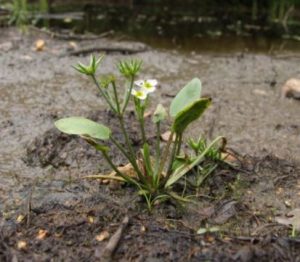Statement on the anticipated drought
9th August 2022
Freshwater Habitats Trust CEO Jeremy Biggs comments on the anticipated drought in the UK this summer.
People often worry that drought is damaging to life in freshwater – after all, how can aquatic species survive without water? But in practice many freshwater plants and animals can readily survive, or even need, periods of drought. While some aquatic species – like fish – need water all the time, many freshwater plants and animals have lifecycles that are well-adapted to, periods of drying out.
Most of the globe’s freshwater network is made up of temporary water bodies and around 50% of the world river network is believed to be seasonal, drying out for part of the year. In hot and dry parts of the world, people are far more used to seeing temporary waters and recognise them as ‘typical’ freshwater habitats. These are less familiar to us in Britain because so many of our temporary waters have been drained and because we assume, incorrectly, that in a wet country like ours temporary water is rare.
In the UK, an estimated 30% of ponds are semi-permanent or seasonal and, while some may only dry out once in 10 or 15 years, others will dry every year. These small waters are a vital part of the resilience of the freshwater environment and, because they are biodiversity rich, form a vital part of the post-drought recovery network.
At our Cutteslowe Meadow demonstration site, near Oxford, for example, experimental populations of four of Britain’s most endangered water and wetland plants are currently doing well – despite their ponds on the floodplain of the River Cherwell being almost completely dry. Indeed, in a drought, networks of small, seasonal, waterbodies remain important to wildlife and livestock as this is where, even though the water may have disappeared, vegetation generally remains lush for longest.
However, it is important to say that, although our research has shown that many freshwater species readily bounce back from occasional periods of drought, we also know that excessively hot, dry weather year after year caused by global heating can bring more profound long-term changes to both standing and running waters. These changes can be due to simple shifts in temperature and availability of permanent water, but more usually involve complex community relationships – for example the presence of algae smothering other plant species or knock-on effects such as water evaporation in high temperatures concentrating the damaging cocktails of pollutants that water animals and plants have to live in.
It is not all gloom and doom however. There are important things that can work to help our freshwater wildlife cope with recurrent drought and increasing temperatures. Freshwater Habitats Trust’s long term Water Friendly Farming project shows that simply doubling the number of clean water ponds in an area can provide resilience against drought and other stresses across the whole region: reducing landscape scale species losses from all waterbodies. Adding new clean water habitats to landscapes in this way is a very positive way we can support freshwater biodiversity in a rapidly heating world.

